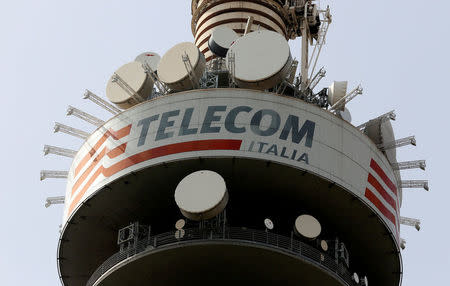Data demand, M&A hopes propel valuations of European mast owners
By Agnieszka Flak MILAN (Reuters) - Surging data traffic and a push to merge capital-intensive networks to cut costs are swelling the value of Europe's mobile infrastructure as it is gradually split away from the telecom industry that built it. The companies that operate cellular phone masts make most of their money renting antenna space to mobile service providers, creating a real estate type of return because the contracts tend to run for many years. Low interest rates have buoyed the valuations of the telecom tower companies, but their growth prospects hang partly on whether more operators are willing to sell their masts so their new owners can make them more efficient and profitable. How soon that will happen is still uncertain. Whereas in the United States four-fifths of masts are in the hands of independent companies, around 75 percent of those in Europe are still owned by the telecom operators, according to Barclays. That has begun to change, bringing opportunities for mast owners like Italy's INWIT and Spain's Cellnex Telecom to expand their portfolios and consolidate more than one network onto a single mast, increasing return on capital while clearing skylines of unsightly poles and transmitters. "Mobile operators are facing the nightmare of how to monetise growth in data traffic so will increasingly be willing to outsource infrastructure to cut costs," INWIT's Chief Executive Oscar Cicchetti told Reuters. Tenancy ratios - the number of operators using a single mast - are 1.6 to 1.9 in Europe, compared with 2 to 3 in the United States, industry figures show. INWIT and Cellnex were spun off and listed last year by Italy's Telecom Italia and Abertis of Spain, respectively, and are now looking to extend their reach. Cellnex has been buying mast portfolios around Europe, recently expanding in the Netherlands and France. Analysts said financial pressures on telecom companies in Portugal, France and Spain could lead to further sales. For now, INWIT is focussing on domestic consolidation in Italy, where it sees more scope for cost cuts and growth. The pending merger of CK Hutchison Holding's 3 Italia with Vimpelcom's Wind Telecommunicazioni and the entry of France's Iliad as a fourth mobile operator in Italy to sooth EU antitrust concerns could result in masts being put up for sale and a new customer for either INWIT or Cellnex. "The European tower footprint is a mess ... with huge amounts of inefficient infrastructure," Jefferies analyst Giles Thorne said. "Reversing the process will happen, but (mobile network operators) can be incredibly sensitive to change." The mast companies are betting on increasing usage by new clients including wireless local loop providers and agencies such as police and fire brigades that shift to networks with broadband capabilities. They also see growth from the Internet of Things (IoT), in which everything from aircraft to hair dryers is increasingly hooked up to the Internet and controlled remotely. Traffic from IoT is expected to grow by more than 40 percent each year on average between 2015-2020, according to Cisco. A MESSY FOOTPRINT Another untapped opportunity lies in small cells, which get attached to traffic lights or lamp posts and allow operators to extend and intensify coverage without needing additional masts. INWIT last month stepped up efforts to deploy small cells in Italy, seeking to follow the likes of U.S.-based Crown Castle which have made the technology an important source of profits in just a few years. In June, Cellnex bought CommsCon, an Italian company that uses small cells to provide coverage in high-traffic areas such as airports, hospitals and stadiums, saying it expected the technology to become "the main driver of the telecommunications infrastructure industry in the coming years". INWIT and Cellnex' core profit margins stand at around 30 to 40 percent compared with around 60 percent for their U.S. peers, a gap that could be trimmed gradually as the companies renegotiate site leasing costs and add tenants to their masts. But much depends on how urgently the mobile service providers need to shore up stretched finances by selling their fixed assets, bringing the tower companies the geographical scale they need to generate value by addressing coverage overlaps. For now, some telecom operators prefer to set up joint ventures with rivals instead of selling the infrastructure outright, keeping some of the control that will be vital as the industry shifts from 4G towards 5G and its denser networks. "Only the more financially challenged mobile network operators will continue to divest tower assets in the near term as the strategic benefit from tower ownership outweighs the potential balance sheet improvement," Macquarie analysts said. (Additional reporting by Stefano Rebaudo; Editing by Ruth Pitchford)

 Yahoo News
Yahoo News 
